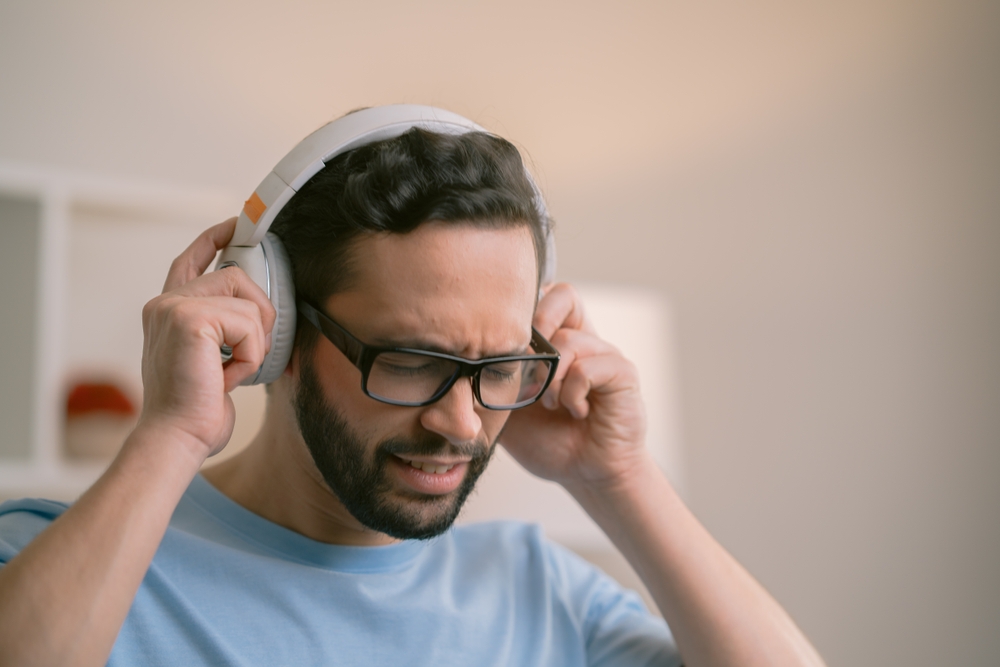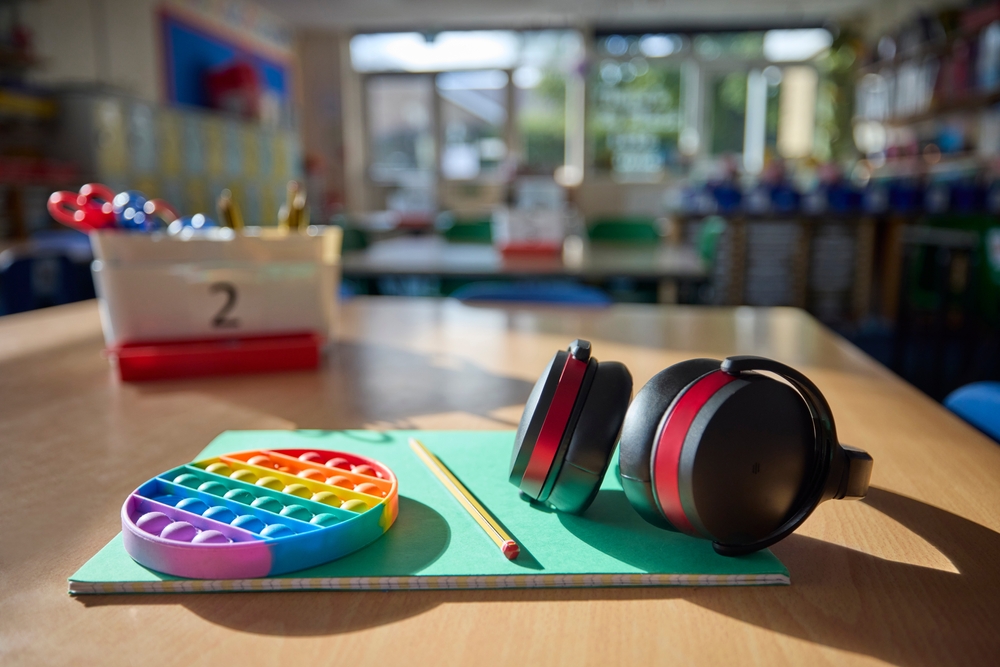Read this blog to learn about the signs of sensory overload in autism, what you can do to help, and strategies to implement in the future.
What are the signs of sensory overload in autism, and what can you do if someone is experiencing it? These are two crucial questions that we should have the answers to if you have autistic loved ones, and taking the time to learn them can not only help to strengthen your relationship, but it will also make the challenge of sensory overload that bit easier to deal with.
Sensory overload in autism occurs when an individual experiences an overwhelming amount of sensory input, leading to distress, anxiety, or shutdown. Common signs include covering ears, avoiding eye contact, or engaging in repetitive movements.
If you want to find out more about ASD, why not have a look at our blogs on how to parent a child with ADHD and autism, if ASD is a learning disability, the difference between Asperger and autism, or learn about 10 iconic autistic fictional characters.
What is Sensory Overload in Autism?

Often described as an intense feeling of overwhelm when the brain receives too much information from the senses, sensory overload is a common experience for individuals with autism. When this happens, the brain and senses are unable to properly process the stimuli (sounds, sights, smells, etc), and can trigger feelings of panic and anxiety. In severe cases, it can cause a meltdown, where you might have involuntary reactions as a response to the stimuli.
Someone who is experiencing sensory overload will be more sensitive to textures, smells, sounds, and other stimuli, which can result in more intense reactions to things like bright lights, unpleasant odours, or distracting sounds. As a result, the anxiety will grow, and they will start to feel agitated, leading to irritability, concentration problems, and even physical discomfort.
There are lots of signs of sensory overload in autism, and these can vary from person to person, with differences in boys and girls being common due to a number of factors.
Common Triggers That Cause Sensory Overload
Triggers can vary from person to person, and every person may have a unique reaction to different stimuli. This means that you need to pay special attention to what is going on around you if you have loved ones with ASD, and try to identify triggers if they are unaware of them.
Some common triggers that can cause sensory overload include:
- Crowded spaces
- Changes in the set routine
- Strong scents like perfume
- Too much visual information
- Touch and texture sensitivities
- Bright lights or lights of particular wavelengths
- Fatigue can more sensory overload more likely
- Unpleasant, strong, or unfamiliar smells and tastes
- Loud and/or disruptive noises (including background noises)
Key Signs of Sensory Overload in Autistic Individuals

Signs of sensory overload in autism vary, but there are several behaviours that you will likely notice if you or someone else is starting to experience it. While some behaviours are more subtle, the worse the sensory overload gets, the more prominent the signs are likely to be.
Top 5 signs of sensory overload in autism:
- More irritable
- Extreme fatigue
- Physical discomfort
- Feelings of restlessness
- Heightened need to self-stimulate
Specific signs that someone is about to, or is already experiencing sensory overload include:
- Covering ears or eyes
- More stimming behaviours
- They want to escape a situation
- Not talking, talking faster, or talking louder
- Trouble recognising sensations in the body
- Moving around more (spinning, jumping, etc)
- Often chewing on non-edible or non-food items
- Frequently playing rough or touching other people
- Overwhelming and escalating emotions (meltdown)
- Refusing to or insisting on wearing particular items of clothing or eating particular foods
- Having trouble responding or communicating when the brain shifts all resources to handle the sensory input (shutdown)
How to Support Someone Experiencing Sensory Overload

Supporting someone who is experiencing sensory overload can vary from person to person, and even place to place. However, there are three key things to remember: go somewhere quieter, get them what they need, and give them time and space to regulate.
We will look at these in a bit more detail below.
Go Somewhere Quieter
Noise, lights, and people are often triggers for many autistic people to experience sensory overload, and removing them from these bright and busy environments will immediately help them start to regulate. If you are in a public space, getting them out of the room or building to somewhere less crowded and noisy will help immeasurably.
Remember not to add to the noise, and stay calm and quiet while offering your help and support.
Get Them What They Need
If someone is already experiencing sensory overload, you should try to get them what they might need to calm down and regulate. This will vary from person to person, and might include fidget toys, weighted blankets, noise-cancelling headphones, or anything else.
In the case where you are not able to get any of these things, you should try and find alternatives or make sure that you get the person somewhere quiet.
Give Them Time and Space to Regulate
When someone is experiencing sensory overload, one of the most important things that you can do is give them the time and space to regulate. This means that you should be quiet, unless they state otherwise, and not do anything that can overstimulate them again.
Sensory-Friendly Strategies to Prevent Overload
There are lots of different strategies that could be useful to someone who is experiencing sensory overload, but these can vary from person to person. If you are close to someone who is autistic, it will be useful to be aware of their particular coping strategies so that you can help them regulate when needed.
In many cases, you may need to make some accommodations to hyper and hyposensitivities. It’s important to remember that avoiding unpleasant stimuli is not always possible, and knowing how to work around them and manage them is key in day-to-day life. For example, you won’t always be able to avoid fluorescent lights or noisy locations, but you can wear noise-cancelling headphones or glasses to minimise the negative impact that the stimuli has on you.
Below are some ways that you can help someone with hypersensitivities:
- Avoid using products that have very strong scents
- Wear earplugs or headphones when in a noisy space
- Prioritise comfortable clothing and accessories at all times
- Do your work where there are closed doors and high walls
- Adjust your schedule to try and avoid large and noisy crowds
- Avoid foods that have tastes or textures that you strongly dislike
- Wear sunglasses or even a hat when under or around strong lighting
At the opposite end of the spectrum, if someone has hyposensitivities, you may want to think of strategies such as the following to help with sensory overload and management:
- Taking breaks often to go around and move
- Utilise sensory tools like chewies or fidget toys
- Move furniture to allow for open and safe spaces
- Eating and drinking things with strong flavours and varied textures
- Using products that provide deep pressure, such as weighted blankets
- Using visual supports if you have difficulty with processing audio information
Does Therapy Help with Sensory Overload?
In some cases, therapies such as Sensory Integration Therapy (SI) can be carried out by occupational therapists to help with sensitivities by ‘rewiring’ the brain. However, this does not always work, and may not be appropriate for everyone.
Cognitive behavioural therapy (CBT) is another option that is widely-accepted, and can help with framing the way you think and challenging thoughts. Again, though, this will not be suitable for everyone, and we highly recommend having an in-depth discussion with a specialist before making any decisions.
How The Brain Workshop Can Help with Sensory Processing Challenges

Here at The Brain Workshop, we are dedicated to helping you understand disorders such as ASD and ADHD to ensure that you get the support you need. We look at topics such as echolalia, sleep disorders, and how you can support loved ones who need it.
Look out for signs of sensory overload in autism to be able to help your loved ones through difficult times, and learn as much as you can. Want expert guidance on managing sensory overload? Contact The Brain Workshop today for tailored support and strategies to create a more sensory-friendly environment.
If you would like to learn more, please don’t hesitate to contact us at the Brain Workshop and find out more about us, our team, events, or even read our FAQ.






